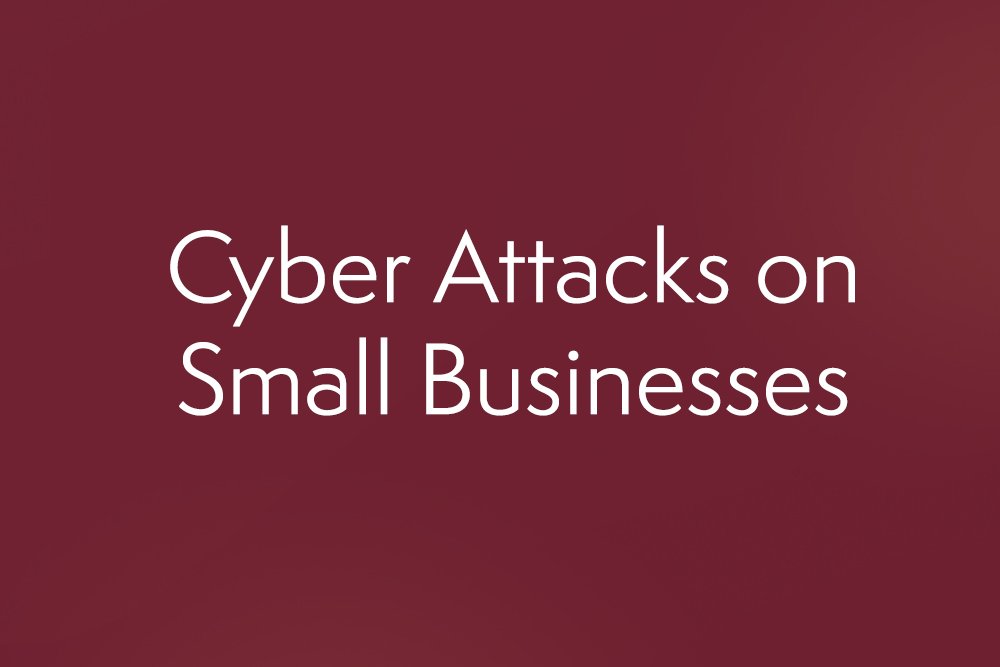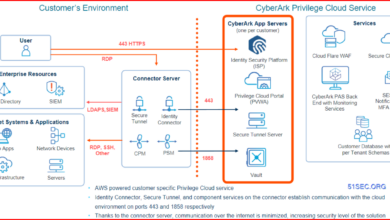
Why Small Business Cyberattacks Could Prompt Next Recession
Why small business cyberattacks could prompt next recession – Why small business cyberattacks could prompt the next recession? It’s a chilling thought, isn’t it? We often hear about massive corporate breaches, but the cumulative effect of countless smaller attacks on businesses across the country could be devastating. Think about it: a single bakery loses its customer data, shuts down for weeks to recover, and then struggles to rebuild trust.
Multiply that scenario thousands of times, and you start to see how a seemingly localized problem can snowball into a major economic crisis. This isn’t just about individual businesses; it’s about the interconnectedness of our economy and the potential for a domino effect that could impact us all.
The ripple effect of these attacks extends far beyond the immediate victims. Supply chains are disrupted, consumer confidence plummets, and the overall economic health suffers. We’ll explore the financial losses faced by small businesses, the role of insurance and government aid (or lack thereof!), and the impact on consumer spending. We’ll also delve into the crucial issue of cybersecurity preparedness for small businesses and what steps they – and we – can take to mitigate this looming threat.
The Economic Ripple Effect of Small Business Cyberattacks
Small business cyberattacks, while often overlooked in the broader discussion of cybersecurity threats, pose a significant and often underestimated risk to overall economic stability. The sheer number of small businesses and their interconnectedness within larger supply chains mean that a widespread increase in attacks can trigger a domino effect with far-reaching consequences. This ripple effect extends beyond the immediate victim, impacting various sectors and potentially contributing to a larger economic downturn.
Direct Financial Losses for Small Businesses
The direct financial impact of a cyberattack on a small business can be devastating. Lost revenue is often the most immediate and significant consequence. A business forced offline due to a ransomware attack, for instance, may lose crucial sales during the period of disruption. Repair costs can be substantial, encompassing expenses for data recovery, system restoration, cybersecurity consulting, and the implementation of new security measures.
Furthermore, legal fees can quickly mount, especially if the attack results in data breaches involving customer or employee information, leading to potential lawsuits and regulatory fines. A small bakery facing a ransomware attack might lose thousands in daily sales while spending thousands more on IT specialists to recover data and enhance security. This could easily push them into bankruptcy.
Impact of Business Interruption on Supply Chains
Small businesses are integral components of many larger supply chains. When a small business experiences a cyberattack that disrupts its operations, the consequences ripple outwards. Larger companies reliant on that small business for parts, services, or raw materials face delays, production slowdowns, and potentially unmet orders. This disruption can lead to increased costs, lost productivity, and damage to their reputation.
Imagine a major automaker relying on a small parts supplier that is crippled by a ransomware attack; the resulting production delays could cost millions and impact the automaker’s ability to meet consumer demand.
Widespread Small Business Cyberattacks and the Domino Effect
The cumulative effect of numerous small business cyberattacks across various sectors can be significant. As more and more small businesses fall victim, the overall economic impact intensifies. This creates a domino effect, with disruptions in one sector cascading into others. For example, a series of attacks targeting small trucking companies could disrupt logistics, impacting numerous industries reliant on timely delivery of goods.
Simultaneous attacks on small retailers could reduce consumer spending, further dampening economic activity. The cumulative effect of these individual incidents could severely weaken the overall economic resilience.
Correlation Between Small Business Cyberattacks and Economic Indicators
The following table illustrates a hypothetical correlation between the number of small business cyberattacks and subsequent economic indicators. It’s crucial to remember that establishing a precise causal relationship requires extensive research and analysis, and this table is a simplified representation for illustrative purposes. Real-world data collection on the precise impact of cyberattacks on small businesses is often incomplete due to underreporting.
| Number of Small Business Cyberattacks (Annual) | GDP Growth (%) | Unemployment Rate (%) | Consumer Confidence Index |
|---|---|---|---|
| 100,000 | 2.5 | 4.0 | 95 |
| 200,000 | 2.0 | 4.5 | 90 |
| 500,000 | 1.0 | 5.5 | 80 |
| 1,000,000 | 0.5 | 7.0 | 70 |
The Role of Insurance and Government Aid in Mitigating Economic Impact
The devastating financial consequences of cyberattacks on small businesses are often amplified by inadequate insurance coverage and insufficient government support. While insurance and government aid programs exist, their effectiveness in mitigating the economic fallout is frequently hampered by several critical shortcomings. A comprehensive approach is needed to address these weaknesses and build a more resilient ecosystem for small businesses facing this growing threat.Insufficient cyber insurance coverage leaves many small businesses financially vulnerable after a cyberattack.
The costs associated with recovery, including data restoration, legal fees, and lost revenue, can quickly overwhelm a small business’s resources.
The Exacerbating Effects of Inadequate Cyber Insurance
Many small businesses opt for basic cyber liability insurance policies due to cost constraints. These policies often have low coverage limits, high deductibles, and exclusions for specific types of attacks or damages. For example, a small bakery suffering a ransomware attack might find their insurance policy only covers a fraction of the ransom demand, leaving them with a significant financial gap to fill.
Furthermore, policies frequently exclude coverage for business interruption, a major cost associated with downtime following a successful attack. This lack of comprehensive coverage forces businesses to shoulder a substantial portion of the recovery costs themselves, potentially leading to bankruptcy or long-term financial instability. A hypothetical scenario illustrates this point: imagine a small online retailer with $50,000 in annual revenue.
A ransomware attack shuts down their operations for a week, resulting in $10,000 in lost sales. Their $25,000 cyber insurance policy only covers data restoration and not business interruption, leaving them to absorb the significant loss of income.
Limitations of Current Government Aid Programs
Current government aid programs, while well-intentioned, often fall short in effectively assisting small businesses recovering from cyberattacks. Many programs are designed for broader economic emergencies and lack the specific focus needed to address the unique challenges of cybercrime recovery. The application processes can be complex and time-consuming, requiring extensive documentation and expertise that many small business owners lack.
Funding may also be limited, with stringent eligibility criteria that exclude many businesses in need. Furthermore, the disbursement of funds can be slow, leaving businesses struggling to meet immediate financial obligations during a critical recovery period. For instance, a small manufacturing company might apply for a Small Business Administration (SBA) disaster loan after a cyberattack disables their production line.
However, the lengthy application process and potentially insufficient loan amount could delay their recovery and hinder their ability to regain lost productivity.
Policy Changes to Improve Insurance Coverage and Governmental Support
Improving the accessibility and effectiveness of both insurance and government aid requires a multifaceted approach. Policy changes should focus on incentivizing insurers to offer more comprehensive and affordable cyber insurance policies for small businesses. This could involve tax breaks for insurers providing such policies or government-backed reinsurance programs to reduce their risk. Government aid programs need to be streamlined, with simpler application processes, faster disbursement of funds, and more generous funding allocations specifically targeted at cyberattack recovery.
Additionally, educational initiatives are needed to increase small business owners’ awareness of cyber risks and the importance of adequate insurance coverage.
Recommendations for Improving Government Aid Accessibility and Effectiveness
- Simplify application processes for government aid programs, minimizing bureaucratic hurdles.
- Increase funding allocations specifically for cyberattack recovery assistance.
- Develop targeted educational programs to guide small businesses through the application process.
- Establish a dedicated government agency or task force to coordinate and streamline aid disbursement.
- Expand eligibility criteria to include a wider range of businesses affected by cyberattacks.
- Expedite the disbursement of funds to ensure timely assistance during the critical recovery phase.
The Impact on Consumer Confidence and Spending: Why Small Business Cyberattacks Could Prompt Next Recession
Widespread cyberattacks on small businesses can significantly impact consumer confidence and spending, potentially triggering a recessionary spiral. The fear of data breaches, financial losses, and disrupted services creates uncertainty, leading consumers to tighten their belts and reduce discretionary spending. This ripple effect can have far-reaching consequences on the overall economy.The erosion of consumer trust stems from several factors. News reports of data breaches at local businesses, particularly those involving sensitive personal information like credit card details or medical records, can spark widespread fear and anxiety.
Consumers may become hesitant to shop online or even in physical stores, fearing that their information could be compromised. This fear, coupled with potential disruptions to services like online banking or utility payments, can significantly curtail consumer activity. Furthermore, the perception of economic instability arising from repeated cyberattacks can lead to a general decline in optimism about the future, further depressing spending.
Decreased Consumer Spending and Recessionary Pressures
Decreased consumer spending, a direct consequence of eroded confidence, acts as a significant catalyst for a recessionary environment. When consumers spend less, businesses experience reduced revenue, leading to layoffs and decreased investment. This creates a negative feedback loop, where reduced economic activity further dampens consumer confidence, leading to even less spending. The resulting economic slowdown can manifest in higher unemployment rates, lower GDP growth, and overall economic instability.
For example, the 2008 financial crisis, although rooted in the subprime mortgage market, was significantly exacerbated by a dramatic decrease in consumer spending driven by fear and uncertainty. Similarly, a series of large-scale small business cyberattacks could create a similar environment of fear and uncertainty, triggering a similar downturn.
Comparison to Other Economic Shocks
The impact of small business cyberattacks on consumer confidence is comparable to other significant economic shocks, such as natural disasters and financial crises. While the immediate effects might differ, the underlying mechanism – a loss of confidence and subsequent reduction in spending – is common to all. Natural disasters like hurricanes or earthquakes can disrupt supply chains and damage infrastructure, leading to price increases and reduced availability of goods and services.
This, in turn, erodes consumer confidence and reduces spending. Similarly, financial crises, like the 2008 global financial crisis, directly impact consumer wealth and create uncertainty about job security and future income, prompting a significant decrease in consumer spending. The key difference lies in the more insidious and widespread nature of cyberattacks, which can affect numerous businesses simultaneously and subtly undermine trust over time, as opposed to the more geographically localized impact of natural disasters.
Comparative Effects of Economic Shocks, Why small business cyberattacks could prompt next recession
| Economic Shock | Impact on Consumer Confidence | Impact on Consumer Spending |
|---|---|---|
| Small Business Cyberattacks | Decreased trust in businesses, fear of data breaches, uncertainty about future economic stability. | Reduced discretionary spending, avoidance of online transactions, decreased overall consumption. |
| Natural Disasters (e.g., Hurricane) | Uncertainty about supply chain disruptions, price increases, potential job losses in affected areas. | Reduced spending on non-essential goods, potential hoarding of essential goods. |
| Financial Crises (e.g., 2008) | Fear of job loss, decreased asset values, uncertainty about future income. | Significant reduction in spending across all sectors, increased savings rate. |
The Cybersecurity Preparedness of Small Businesses

Small businesses, the backbone of many economies, are increasingly vulnerable to cyberattacks. Their often-limited resources and lack of dedicated IT staff leave them exposed to a range of threats, with potentially devastating economic consequences. Understanding the current state of cybersecurity preparedness among these businesses is crucial to mitigating the risk of future economic downturns.The reality is that many small businesses are woefully unprepared for cyberattacks.
A significant percentage lack even basic security measures, relying on outdated software, weak passwords, and a general lack of employee training. This vulnerability is exacerbated by the increasing sophistication of cyberattacks, which are becoming more frequent and more damaging. The economic impact of a successful attack can range from minor disruptions to complete business failure, contributing significantly to economic instability.
Common Vulnerabilities in Small Business Cybersecurity
Small businesses frequently exhibit several key vulnerabilities. These include inadequate password management (often using easily guessable passwords or reusing passwords across multiple platforms), failure to update software and operating systems regularly (leaving systems exposed to known vulnerabilities), lack of employee cybersecurity training (resulting in phishing scams and other social engineering attacks), and absence of robust data backup and recovery plans (making recovery from a ransomware attack extremely difficult and costly).
Furthermore, many lack firewalls or other network security measures, leaving their systems open to intrusion. The lack of multi-factor authentication also presents a significant weakness.
Cyberattack Threats to Small Businesses
Ransomware attacks represent a major threat, crippling operations by encrypting critical data and demanding payment for its release. Phishing scams, exploiting employee vulnerabilities through deceptive emails or messages, remain incredibly effective in gaining access to sensitive information. Denial-of-service (DoS) attacks can overwhelm a business’s online presence, disrupting operations and damaging reputation. Data breaches, resulting from inadequate security measures, can lead to significant financial losses, legal liabilities, and reputational damage.
Finally, malware infections can compromise systems, steal data, and disrupt operations.
Affordable and Effective Cybersecurity Measures
Fortunately, small businesses don’t need to invest in expensive, complex systems to improve their cybersecurity posture. Implementing strong passwords and multi-factor authentication is a crucial first step. Regularly updating software and operating systems patches vulnerabilities exploited by attackers. Employee cybersecurity training programs, focusing on phishing awareness and safe online practices, are essential. Utilizing cloud-based backup solutions provides affordable and reliable data protection.
Finally, investing in a basic firewall can significantly enhance network security. These measures, while relatively inexpensive, can significantly reduce the risk of a successful attack.
Resources for Improving Small Business Cybersecurity
Small businesses can access a wealth of resources to improve their cybersecurity.
- The Small Business Administration (SBA) offers guidance and resources on cybersecurity best practices.
- The Cybersecurity & Infrastructure Security Agency (CISA) provides valuable information and tools to help businesses improve their security posture.
- Numerous free or low-cost cybersecurity awareness training programs are available online.
- Many cybersecurity vendors offer affordable solutions tailored to the needs of small businesses.
- Industry associations and chambers of commerce often provide cybersecurity workshops and resources.
The Interconnectedness of the Digital Economy and Systemic Risk
The increasing reliance on digital technologies has fundamentally reshaped the economic landscape, creating a highly interconnected digital economy where small businesses play a crucial, albeit often overlooked, role. This interconnectedness, while fostering efficiency and growth, also introduces significant systemic risk, particularly in the face of cyberattacks targeting these smaller players. A seemingly isolated incident affecting a single small business can quickly escalate into a widespread disruption with far-reaching consequences.The digital economy’s dependence on intricate networks of data exchange and supply chains makes small businesses particularly vulnerable.
Many lack the robust cybersecurity infrastructure and resources of larger corporations, leaving them exposed to ransomware attacks, data breaches, and other cyber threats. Their reliance on digital platforms for operations, from online sales and customer relationship management to inventory management and financial transactions, means a successful cyberattack can cripple their operations almost instantly. This vulnerability is amplified by the fact that many small businesses are integral components of larger supply chains, acting as crucial suppliers or distributors for larger companies.
The Cascading Effects of Small Business Cyberattacks on the Digital Economy
A widespread disruption of small businesses due to cyberattacks could trigger a domino effect across the digital economy. Imagine a scenario where a significant number of small businesses, perhaps those specializing in logistics or software development, experience crippling cyberattacks. This could lead to delays in the delivery of goods and services, impacting larger companies dependent on these smaller suppliers. Software failures in small businesses could cascade into larger operational disruptions across industries.
The resulting supply chain bottlenecks, production delays, and service disruptions could significantly reduce economic output and trigger a downturn. The 2021 Colonial Pipeline ransomware attack, for instance, serves as a real-world example of how a cyberattack on a single company (though a large one) could lead to widespread fuel shortages and economic disruption. While not solely reliant on small businesses, the incident highlights the vulnerability of interconnected systems.
Systemic Risk and Recessionary Potential
The concept of systemic risk highlights the potential for the failure of one or more small businesses to trigger a cascade of failures throughout the entire economy. In the context of cyberattacks, this means that the cumulative effect of numerous attacks on small businesses could overwhelm the resilience of the digital economy, leading to a significant economic downturn. The interconnected nature of modern business means that the failure of a seemingly insignificant small business can have disproportionately large effects on larger firms and the overall economy.
This is especially true given the current reliance on just-in-time inventory management and globally distributed supply chains. The economic shock from widespread cyberattacks on small businesses could trigger a decrease in consumer confidence, reduced investment, and ultimately, a recession.
Visual Representation of Interconnectedness and Cascading Effects
Imagine a network diagram. At the center, represent the digital economy as a large, complex web. Within this web, numerous smaller nodes represent individual small businesses, each connected to others through various lines representing supply chain relationships, data exchange, and other dependencies. Now, imagine several of these small business nodes turning red, indicating a successful cyberattack. From these red nodes, visualize radiating lines of disruption extending outward, affecting other connected nodes.
Some nodes might turn orange, representing partial disruption, while others might remain unaffected initially. However, as more nodes turn red, the overall stability of the web is visibly threatened, leading to a widespread disruption and potential collapse of the entire network, symbolizing a recessionary impact. This visual effectively demonstrates how a localized cyberattack on a small business can quickly become a systemic issue, threatening the stability of the entire digital economy.
Final Thoughts

The threat of widespread small business cyberattacks triggering the next recession isn’t a far-fetched scenario. The vulnerability of small businesses, coupled with inadequate insurance and government support, creates a perfect storm. While the situation seems daunting, it’s not hopeless. By improving cybersecurity preparedness, advocating for better insurance coverage and government aid, and fostering greater consumer awareness, we can collectively work to reduce the risk and build a more resilient economy.
It’s time to take this seriously – before it’s too late.
FAQ Summary
What types of cyberattacks are most common against small businesses?
Ransomware, phishing scams, and malware infections are particularly prevalent, often exploiting weak passwords or outdated software.
Can’t small businesses just rely on insurance to cover cyberattacks?
Many policies have limitations, high deductibles, and may not cover all losses, leaving businesses with significant out-of-pocket expenses.
What resources are available to help small businesses improve their cybersecurity?
The Small Business Administration (SBA) and the Cybersecurity & Infrastructure Security Agency (CISA) offer valuable resources, including guides, training, and funding opportunities.
How can consumers help protect small businesses from cyberattacks?
By being vigilant about phishing emails, only using secure websites, and supporting businesses that prioritize cybersecurity, consumers can play a vital role.





